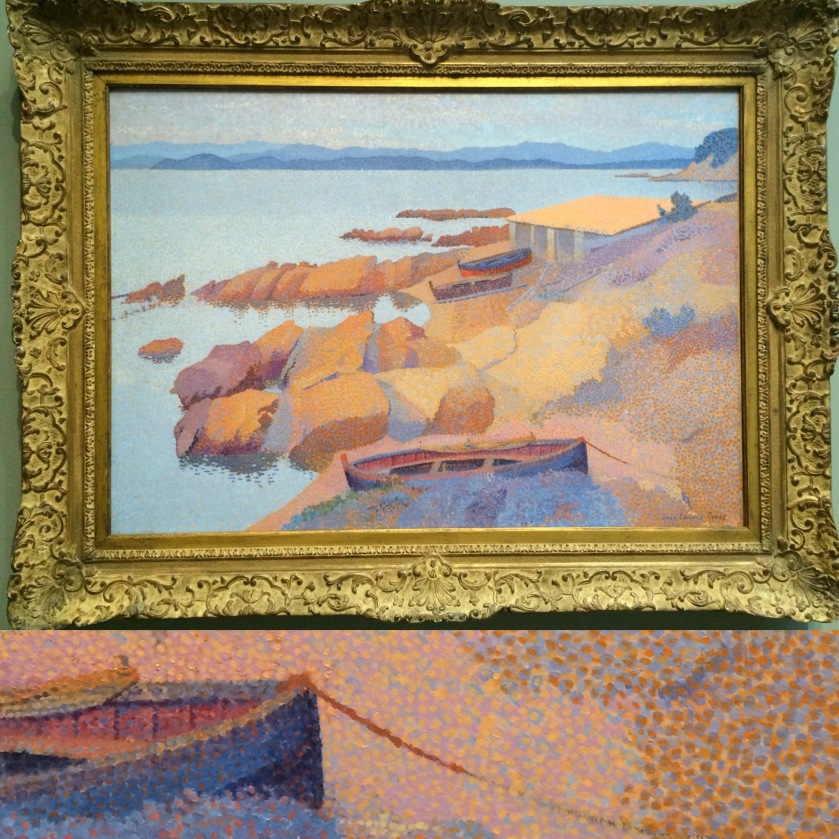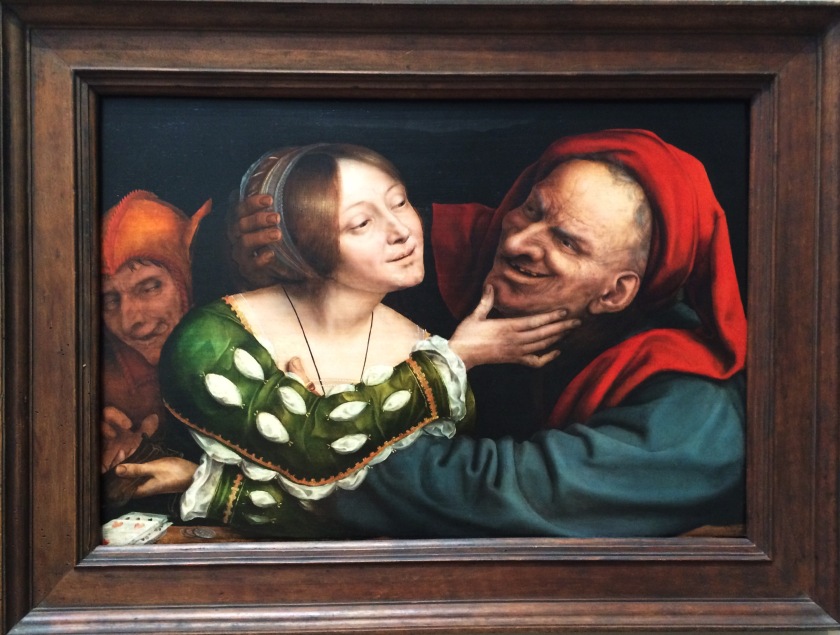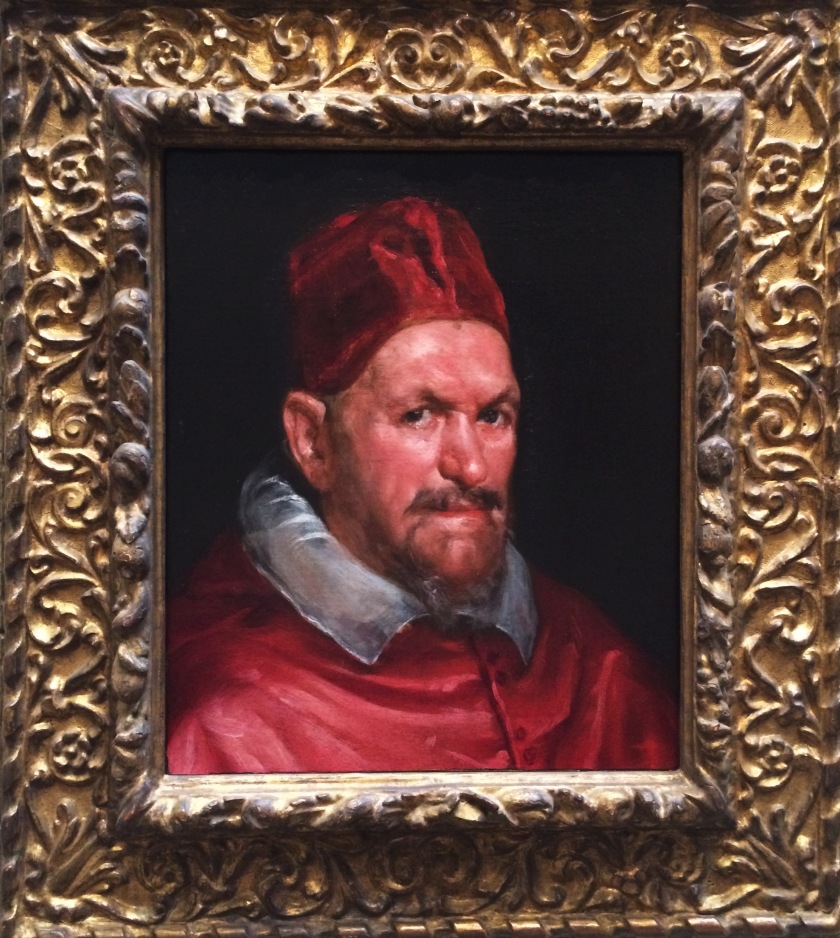The National Gallery of Art (a.k.a ‘Fancy Art’) is probably my favorite museum. It is large and opulent and one could wander there everyday for weeks and not be able to see it all. So here are a few that stuck out above the rest:
-
Self-Portrait by Vincent Van Gogh (1889)
I am not ashamed to admit that my love for van Gogh directly stemmed from the Doctor Who episode about him. His love for the selfie (painting over 43 renditions of himself), his ability to utilize angles to his advantage (keeping that mutilated ear out of frame), and being another example that beards make nearly everyone look cooler (although his self-portrait without a beard did sell for a record breaking $71. 5 million, so I may want to change that theory…).
2 &3. Saint Lucy by Francisco de Zurbaran (c. 1625-1630) & Saint Lucy by Francesco del Cossa (c. 1473/1474)

Since I am married to a devout Catholic, some of his Catholic traditions have rubbed off on me. These include: a love for gaudy churches (the more mosaics the better), rosaries everywhere, going to seafood restaurants on Fridays, my husband wishing we had a prenuptial agreement when it comes to praying for him in purgatory and getting him an appropriate amount of masses after his death, and a deep a appreciation for saint lore.
Above is Saint Lucy and she is the patron saint of the blind (among other things). A common trend I have witnessed in my learnings of the saints is that they usually have several variations associated with their personal histories. Saint Lucy, for example, is said to have lost her eyes due to either a pagan governor ordering them gouged out because of a prophecy given to him by Saint Lucy predicting his demise or she gouged them out herself because a suitor found them attractive. Either way both are interesting.
Along with the legendary eye gouging her betrothed found out she was giving her dowry to the poor as well as committing her life to God (and chastity goes along with the whole becoming a nun thing). This guy got pretty mad and tattled about her to the pagan governor of the region who demanded she give the emperor a burnt sacrifice. She refused because the Bible is pretty clear about not giving sacrifices to anyone/thing but him. So the governor decided an appropriate punishment was to send her to work at a brothel, which didn’t work as the legend claims that even when hitched to a team of oxen should could not be moved. She was then to be burned, also didn’t work. But apparently the sword did.
See saint lore is so cool.
4. Ill-Matched Lovers by Quentin Massys (c. 1520/1525)
No great history behind painting/painter, but I love it.
5. Pope Innocent X by Circle of Diego Velazques (c. 1650)
So grouchy looking and pretty boring. I thought for sure this pope was up to no good and when writing this blog post I would find all the dirt on him. Sadly all I could find was a small squabble between two papal parties in which the only major outcome was that in a rendition of Saint Michael vanquishing Satan, Satan looks a whole lot like Pope Innocent X. Boring.
6. The Temptation of Saint Anthony by Follower of Pieter Bruegel the Elder (1550/1575)

This painting is amazing for a multitude of reasons:
- Michael and I are obsessed with an author by the name of Jesse Bullington. The first book we read by him was The Sad Tall of the Brothers Grossbart. Imagine Supernatural set during the plague and instead of the brothers being roguishly handsome with a heart of gold, they are instead just absolutely disgusting and horrid inside and out. Anyways, he wrote another book- Folly of the World-where he took his inspiration from a painting. This painting, Netherlandish Proverbs is a work of Pieter Bruegel the Elder and within this painting over 100 netherlandish proverbs are portrayed. Upon first glance the scene is so cluttered that you glance for a second and move on thinking it is just an ordinary village painting… but it is not! And that my friends is so cool.
- I have fallen prey to just merely glancing at this beautiful piece as nothing more than another saint scene. But now armed with the knowledge of Pieter Bruegel and his style I caught the name of the painter (as I am trying to work on my Painter-Painting recognition) and went in for a closer look. Oh I love being surprised. So thank you follower of Mr. Bruegel for following in his footsteps *tip of the ole hat.
- Saint Anthony the Great (aka Father of Monks) and his temptations (just a centaur, silver and gold, women, being beaten to the point of death by demons, having God intervene…you know, normal stuff). His years of hermitage in the Arabian desert have been a very popular subject for painters.
7. Coast Near Antibes by Henri Edmond Cross (1891)

Because who doesn’t love pointillism.
8. Allegory by Piero di Cosimo (c. 1500)

Because mermaids and donkey-horse.



